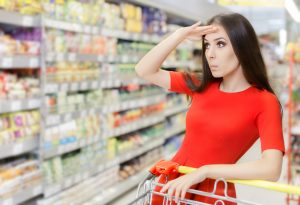The UK desperately needs a Social, Local, Food Map

Political and economic uncertainty post the US, French and UK elections and running up to Brexit mean that our food industry could change dramatically with big price rises and multiple food scares. To combat these global threats we need a UK wide Local Food Map to encourage greater consumption and production of local food.
The UK currently exports £19bn worth of food & agricultural produce, imports £39bn and throws away £13bn. In 2015 UK farmers supplied 52% of our food. (80% eggs, meat, dairy, 62% cereals, but only 23% fruit and veg)
For the last 20 years most UK farmers have followed European directives to adapt to global trade and commodity prices. To compete farmers have been subsidised and middlemen and corporates have stepped in to process and distribute our food, often causing food scares like mad cow and horse-meat.

Intensive commodity production
At the same time consumers have been disconnected from where their food comes from by supermarkets, and make the wrong food choices due to lack of knowledge and misleading messages from food marketeers. This has led to obesity, diabetes and heart disease costing the tax payer £billions.
Luckily some farmers have turned their back on Europe, and commodity production, and use our green and pleasant land to grow and sell real food to local consumers, including small shops, pubs, restaurants and even hospitals.
Thousands more farmers could also supply fresh healthy food direct to local consumers. Direct, to give farmers a better deal than the average 9p in every £1 they currently get from the supermarket, and direct, to allow consumers to communicate with the producer to get involved and gain knowledge about healthy food and influence what is grown locally.

Local people growing fresh healthy food
What the UK now needs is a Local Food Map to catalyse the growth of local trade and the reconnection process. A map that everyone uses and shares and is constantly evolving and updating. A map that encourages more farmers to grow food and more local consumers to buy it and take an active interest in what is grown.
A team of farmers and social entrepreneurs at the BigBarn Community Interest Company have been building such a map for the last 16 years and now have 6,500 local food outlets listed. This month they launched new technology to allow any website, or organisation, to take a data feed or have the map to look as though it is theirs, and share the proceeds of online sales.
But what about carrying on as we are, many people may ask, what could go wrong with the current food industry?

Constantly updating and growing Local Food Map
Here are some stories from the current food industry to help show the complete picture:
A vegetable farmer supplying the supermarkets recently said that if he lost his EU subsidy that paid for 50% of costs, together with not being able to get foreign labour, he would switch production abroad.
A grain producing farmer said that for the last two years, at world grain prices, if he had not received his EU subsidy he would have lost money.

Your local Raw Milk farmer?
A dairy farmer said that if he had not switched from selling to the industry, to selling locally via a vending machine, he would have gone bankrupt.
Another dairy farmer read that modern commercial ice cream was made using additives instead of cream so started making real ice cream from his own milk. He has built a thriving business employing local people and sells to local shops, caterers and via an old shed converted to an ice cream parlour.
An onion grower said that he had opened a farm shop 5 years ago to try and get a better price for his crop. He now grows 20 types of fruit and veg and offers customers fresher, better, produce, cheaper than the local supermarkets, and makes a good profit.
A farmer near Nottingham said that he was delighted to be making a good return from supplying vegetables to the local hospital and helping them save £750k last year.
An apple grower persuaded to destroy his orchard to get an EU subsidy 15 years ago is now replanting apple trees to make his own apple juice, and cider, to meet local demand.

Get cider made from apples not concentrate
A farmer recognising the need to educate children about food has built a veg patch and planted an asparagus bed at the local school. The school includes the growing of food in lessons and uses the produce in school meals. The farmer sells any excess crop in his farm shop and is delighted to see school mums using the shop regularly.
A number of pubs now invite local veg patch owners to supply the pub with vegetables in return for a free drink.
An ex-policeman with a love for horticulture started growing veg plants from seeds in his greenhouse. He sells thousands to local grow your own consumers from his gate at £1 per plant, 30% cheaper than imported plants from B&Q.
There are many more stories like this and some fantastic examples of how local food can build communities, create jobs, boost local economies, and get people healthy.

Bargain, healthy, foreign, or rip off
Brexit and times of uncertainty are when we need good government to provide infrastructure and legislation to make change for the better. In the case of food; changing from; subsidising farmers to grow commodities to compete on world markets via long supply chains, to; growing real food for knowledgable consumers via short supply chains.
If we carry on with the current EU led food policy, NHS costs will continue to rise as people get more unhealthy. If government spending moves from farm subsidies to the NHS there will be no net gain and probably a large net loss as farms cut costs and imports rise.
Surely it would be better to spend on building local food systems that boost economies, reduce imports, and increase food knowledge. Al helping to increase consumer health and therefor reduce NHS spend.
This is why we need a UK Local Food Map, so let’s all use it for a better, healthier, more sustainable, tastier, Britain!
As always we welcome your thoughts below.